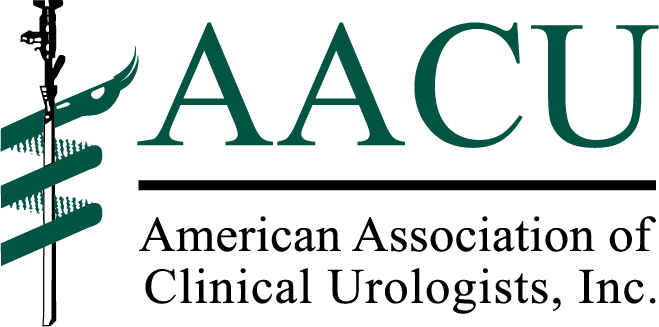Article
CMS outpatient rule divides opinion
Author(s):
Significant Medicare regulatory changes finalized in November will end legal incentives that have enabled hospitals to leverage Medicare payment policy to generate profits allowing them to acquire physician practices and gain competitive advantages in the health care marketplace.
Significant Medicare regulatory changes finalized in November will end legal incentives that have enabled hospitals to leverage Medicare payment policy to generate profits allowing them to acquire physician practices and gain competitive advantages in the health care marketplace.
Contained in the Medicare Outpatient Prospective Payment System (OPPS) final rule for 2019, the changes were hailed by Deepak A. Kapoor, MD, chairman of health policy at LUGPA, and were met with vehement opposition by the American Hospital Association (AHA).
Payments to be leveled for outpatient visits
The changes state that:
Over a 2-year period, the Centers for Medicare & Medicaid Services will level payments for outpatient office visits regardless of site of service. For the first time, all physicians practicing medicine away from a hospital campus will be paid the same amount for doing the same work.
CMS is closing a loophole that had permitted acquired off-campus physician offices to benefit from cost advantages in the 340B drug program.
Ambulatory Service Center (ASC) payment updates will now be under the hospital market basket pricing schedule rather than the Consumer Price Index (CPI), eliminating the payment discrepancy between hospital-owned and free-standing ambulatory facilities.
Under the new rule, hospitals will be paid 70% of the OPPS rate in calendar year 2019, a figure that will drop to 40% in 2020 and beyond. This is estimated to reduce Medicare costs by $380 million in 2019, CMS said, adding that it would support more patient choice in care access.
Also by Bob Gatty: LUGPA urges Congress to update Stark law
“Today’s rule advances competition by creating a level playing field for providers so they can compete for patients on the basis of quality of care. The final policies remove unnecessary and inefficient payment differences, so patients can have more affordable choices and options,” said CMS Administrator Seema Verma.
However, Tom Nickels, executive vice president of government relations and public policy for the AHA, said the OPPS rule would be harmful to hospitals and that the AHA is going to court.
“Today’s misguided final rule will have negative consequences for the patients we serve,” he said. “This rule, which phases in over 2 years payment cuts to hospital outpatient clinic visits, is based on unsupportable analyses and erroneous policy rationales. These ill-advised cuts will hit patients in rural and vulnerable communities especially hard. Congress recognized the crucial role of hospital outpatient departments in the communities they serve and, in 2015, specifically protected existing facilities from unwarranted payment reductions.
“Today’s final rule could stifle hospitals’ ability to modernize care and meet the needs of their patients and communities.”
Nickels said the rule exceeds the administration’s legal authority and that the AHA, other hospital organizations, the Association of American Medical Colleges and member hospitals “intends to promptly bring a court challenge” to the site-neutral provisions.
Continue to the next page for more.340B program has been a ‘piggybank’
However, LUGPA’s Dr. Kapoor, in an exclusive interview with Urology Times, charged that many hospital corporations have been using the 340B pricing program for years as a “piggybank” to fatten their bottom lines in instances where they operate clinics in both low-income and high-income areas.
“They’ve been buying drugs for the indigent population at lower rates for those facilities and selling them to suburban clinics where there are no indigent patients at all,” he said. “They’ve been using those drugs to supply non-safety net offices that they had purchased.”
Dr. Kapoor cited a study which the authors said they found that hospital-affiliated clinics that registered for the 340B program in 2004 or later served communities that were wealthier and had higher rates of health insurance compared to communities served by hospitals and clinics that registered prior to 2004 (Health Aff [Millwood] 2014; 33:1786-92).
Making matters even worse, contended Dr. Kapoor, is that those profits often are used to purchase more physician practices and control market share. And, he said, “It is all being done on the backs of consumers.”
Read: Payment reform promotes equity between practice settings
CMS’s new rule, he said, “will severely curtail the ability of hospitals to control health market share dollars.”
By closing a loophole that had permitted acquired off-campus physician offices to benefit from cost advantages in the 340B drug program, Dr. Kapoor said hospitals no longer will be able to charge more for exactly the same service that had been provided in the past by that office.
That is especially important with respect to evaluation and management services, he said.
“Medicare now says that if you see a doctor in an off-campus facility, you will pay the prevailing rate. We actually have had situations where two doctors in the same building would provide the same service, but one would get 50% more for doing the same work just because that practice had been acquired by a hospital,” Dr. Kapoor said.
“CMS has clearly stated that patients should not pay more for the same service on different sites,” he said.
Regarding the ASC payment decision, Dr. Kapoor said that by basing payments on the facility payment schedule rather than the CPI, hospital payment increases will be lower than if the CPI was still used. That, he explained, would further limit hospitals’ ability to purchase physician practices and reduce competition.
















